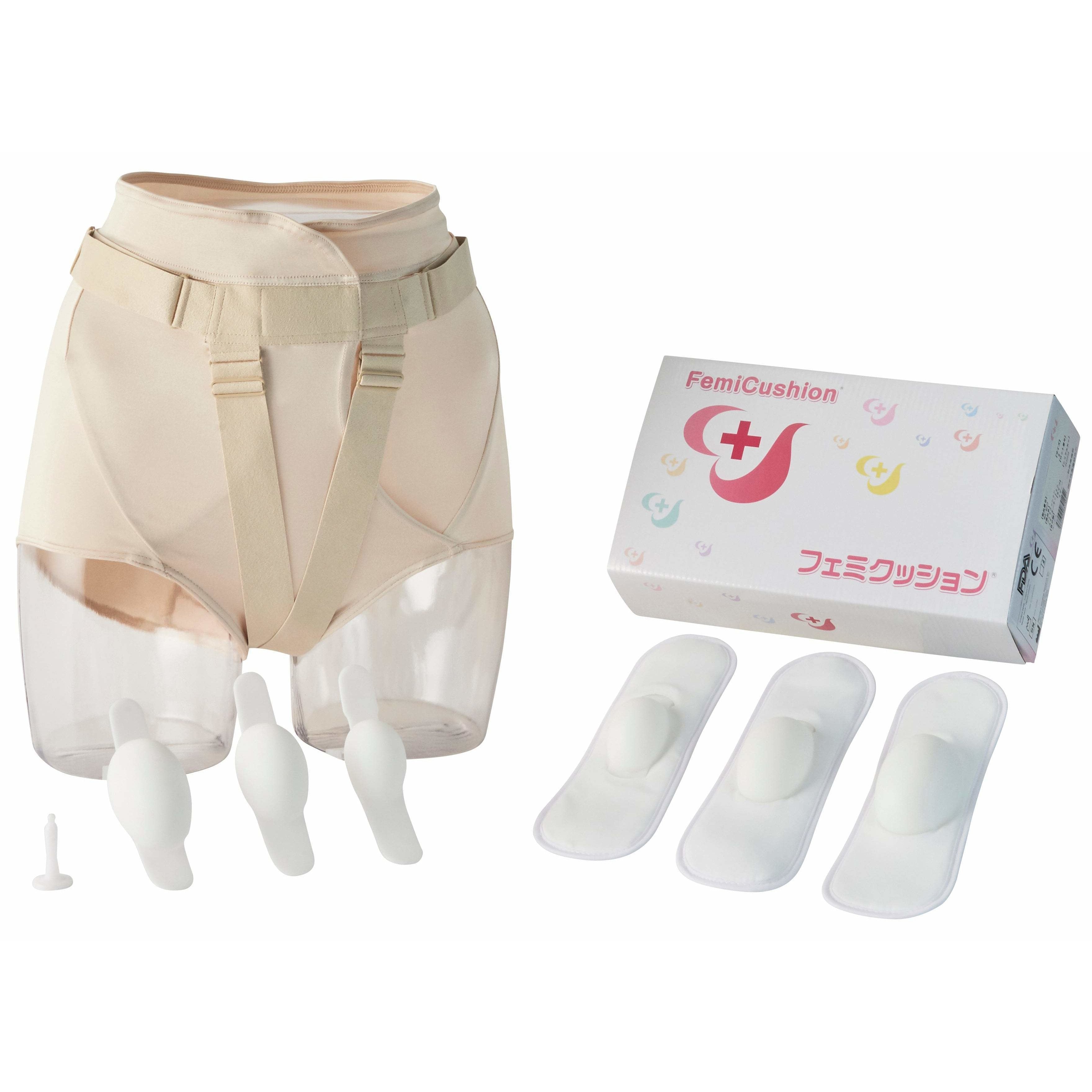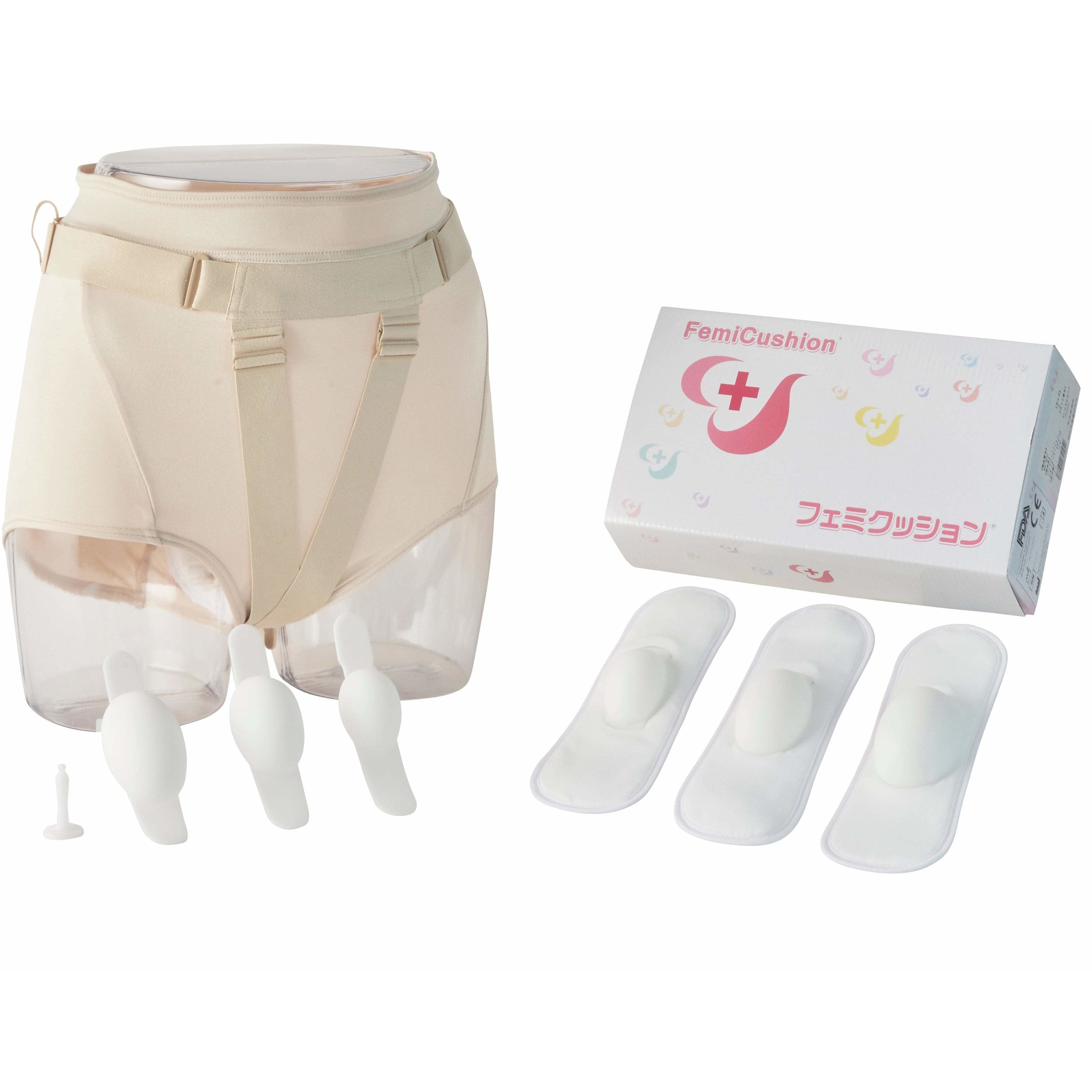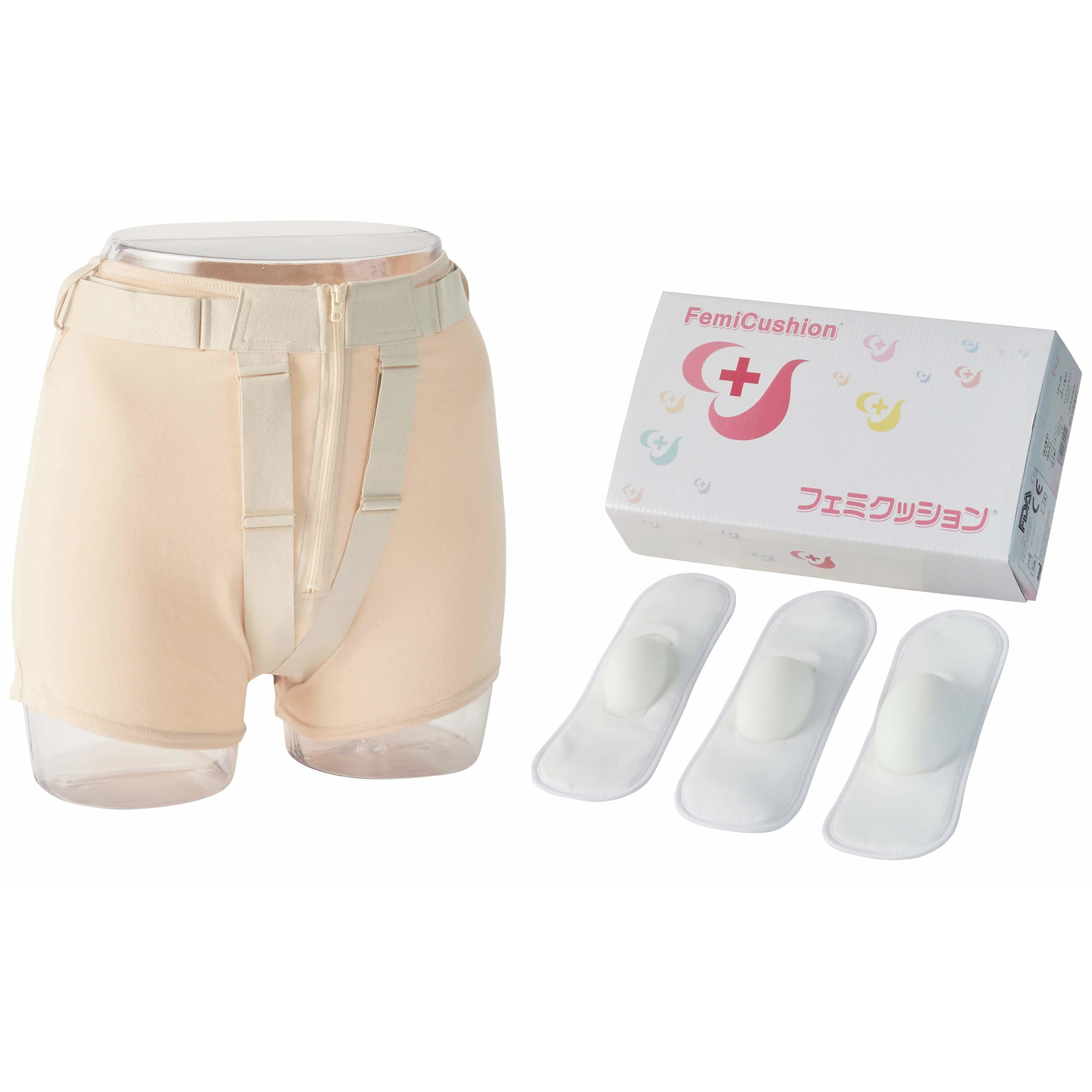Prolapse after Hysterectomy: Causes, Symptoms, Prevention, Management
Table of Contents
Life post-hysterectomy can come with many changes, both physical and emotional. While common hysterectomy side effects are quite well-known, a lesser known issue is a condition called pelvic organ prolapse. The evidence for prolapse as a direct result of hysterectomy is not conclusive, but several studies have been performed to measure the connection between the two. In this article we cover:
- Does a hysterectomy increase the risk of prolapse
- Prolapse symptoms after a hysterectomy
- Prolapse prevention tips
- Post-hysterectomy prolapse treatments
- A new non-invasive alternative to current treatment options
Can I develop prolapse after a hysterectomy?
For women suffering from uterine prolapse, hysterectomies have found a place in medicine as a viable surgical treatment. But while this procedure can greatly improve quality of life, some studies suggest that it may also increase the risk of post-hysterectomy prolapse.
Because a hysterectomy removes part or all of the uterus, other pelvic organs that rely on the uterus to secure their positioning within the body may begin to “fall” out of place. While bladder prolapse (cystocele) is the most common form in general, women who suffer from post-hysterectomy prolapse are at a greater risk of apical prolapse, such as vaginal vault prolapse (where the vagina begins to drop). The reason for this is that the vagina is connected to the uterus, and after removing the uterus during surgery, the apex (top) of the vagina is no longer naturally attached within the body and therefore must be reattached to healthy ligaments that were not removed during surgery.
Depending on the type of hysterectomy procedure that is chosen, surgical steps taken by the operating physician to prevent future vaginal vault prolapse may not have lasting results. It’s worth noting that some physicians claim that more invasive open abdominal or vaginal hysterectomies may result in removing ligaments that are essential for securing the vagina, while laparoscopic hysterectomies do not have this unwanted side effect.
Furthermore, through various studies researchers have found a probable correlation between women who have had a hysterectomy and a 3.2-5% increase of prolapse post-hysterectomy.1,2 Another set of studies found the following:
“This is also supported by two case control studies which have demonstrated that previous pelvic floor surgery is the greatest risk factor for developing PHVP [post-hysterectomy vaginal vault prolapse] and with the risk of prolapse repair being 4.7 times higher if a vaginal hysterectomy was performed for prolapse.”1
Factors That Increase the Risk of Prolapse After Hysterectomy
Hysterectomy although a treatment option for uterine prolapse, it involves cutting ligaments and tissues in the pelvic floor. This can cause damage to the tissues and blood supply of the pelvic floor that supports other pelvic organs like the bladder, vagina, and rectum increasing the risk of other types of pelvic organ prolapse. Below we discuss the different factors that increase the risk of prolapse after a hysterectomy surgery.
Hysterectomy and pelvic floor repair surgery: Undergoing surgery for the pelvic floor can put women at a higher chance of developing pelvic organ prolapse.
Type of hysterectomy performed: Studies have shown that certain types of pelvic organ prolapse are more common after different types of hysterectomy surgery wether it is partial or total. See below for the types of prolapse possible post hysterectomy.
Time since the hysterectomy was performed: As the length of time increases since the hysterectomy, so does the risk of a post hysterectomy prolapse. Some women would need to undergo pelvic floor surgery again later down the line after undergoing a hysterectomy.
Cervix removal: Depending on the type of hysterectomy performed, a partial or a total hysterectomy, the cervix may be removed as a part of the surgery. In a total hysterectomy, the cervix is removed and the vagina will be stitched closed. Without the cervix, the surrounding pelvic organs looses a support structure increasing the risk of pelvic organ prolapse.
Post hysterectomy support for the vagina: It is important to discuss with your surgeon before a hysterectomy to go over the surgical plans. One of the main points to discuss is the technique used to support the vagina. The risks of vaginal vault prolapse may increase for women who did not have the top of their vagina stitched to the surrounding pelvic floor structures during a hysterectomy.
Types of Prolapse After Hysterectomy
Removal of the uterus in the pelvic floor is removing an important structure for support for the surrounding pelvic organs. Therefore, there are many studies that suggest a hysterectomy will increase ether risk of other types of pelvic organ prolapse. Listed below are the types of prolapse that have a higher chance of occurring after the removal of the uterus.
Vaginal vault prolapse: The top of the vagina prolapses down into the vaginal canal.
Small bowel prolapse (enterocoele): The tissue around the intestines or the small intestine descends into the pelvic cavity pressing against the back of the vaginal wall creating a bulge.
Bladder prolapse (cystocele): This prolapse occurs when the bladder drops down into the vaginal canal due to a weakened pelvic floor.
What prolapse symptoms are common after a hysterectomy?

Women with post-hysterectomy prolapse will likely deal with a number of symptoms that can significantly decrease quality of life. These symptoms can be broken into four groups.1,3
Vaginal Symptoms
- The feeling of stiffness or something “falling down.” This bulge-like sensation may also make it difficult to stand or walk.
- Pressure that is often described as an uncomfortable “heaviness” within the vagina.
- Lower back pain
- External vaginal bleeding caused by the prolapsed organ coming into contact with clothing or other body parts
- Internal vaginal bleeding
Lower Urinary Tract Symptoms
- Increased frequency and urgency to urinate at all hours of the day
- Urinary incontinence (involuntary urination)
Bowel Symptoms
- Unable to completely evacuate a bowel movement
- The need to digitate (use a finger to assist) while defecating
- Increased urgency to defecate
- Fecal incontinence (involuntary soiling)
Sexual Dysfunction
- Painful intercourse (dyspareunia)
- Vaginal laxity (a feeling of “looseness” accompanied by less sensation)
- Loss of self-esteem
Can I prevent prolapse after a hysterectomy?
There are many lifestyle changes and exercises that can be used to prevent, delay, or manage post-hysterectomy prolapse. 4
Make Kegel Exercises (Pelvic Floor Exercises) a Habit
Kegel exercises strengthen your pelvic floor muscles. While they were initially created for preventing urinary incontinence, doing these exercises can also help with pelvic organ prolapse by preventing the organs from descending.
Manage Constipation
Among the many side effects of constipation, this condition can also cause you to exert too much pressure on the pelvic floor. With appropriate dietary changes, proper hydration, and medication, it is possible to manage constipation.
Avoid Lifting Heavy Objects and Certain Exercises
Any activities that place a strain on your pelvic floor also increase your chances of developing pelvic organ prolapse after a hysterectomy. Not only should lifting heavy objects be avoided, but any exercises designed to strengthen your core muscles such as sit-ups, crunches, leg raises, and plank exercises should be practiced with caution.
Address Chronic Coughing
Chronic coughing can cause the pelvic floor muscles to involuntarily contract, which can worsen your prolapse if the cough continues to occur over a period of time. This condition is likely a symptom of a greater medical problem, such as smoking, infection, cough-variant asthma, or even a side effect of medication, so it’s best to consult with your physician to diagnose and treat chronic coughing, especially if you are at a risk of developing pelvic organ prolapse.
How can I treat prolapse after a hysterectomy?
If you find that your post-hysterectomy prolapse is progressively getting worse even with lifestyle changes, then it’s time to consult with your physician about appropriate treatment options depending on the stage of prolapse.
For women who suffered from prolapse prior to having a hysterectomy, these treatment options are likely already known, but for those whose first occurrence of prolapse happens after a hysterectomy, here are the three most common options.
Prolapse Surgery
Because of the impact that a hysterectomy has on the body, corrective prolapse surgery can’t guarantee against future re-occurrences. With that being understood, some surgical options include:
- Stitching up the weak vaginal wall
- Reinforcing the weak vaginal wall with sheet-like mesh
- Reinforcing the weak vaginal wall with your own skin
- Sewing the front and back walls of the vagina together to prevent the organs from descending
Prolapse Pessaries
A pessary is a medical device often prescribed to women that is inserted into the vagina to help hold the pelvic organs in place. Pessaries are a relatively simple solution compared to surgical treatments, but since the device is placed inside the body, it can lead to infections, an increase of discharge, an unpleasant odor, as well as other side effects.
Prolapse Garments
While there are only a few effective options for prolapse garments currently available on the market, there is a growing interest in non-surgical, non-invasive devices like FemiCushion that can be worn outside the body like clothing. The purpose of these garments is to give the wearer the same support as using a pessary, but without the unwanted side effects.
It’s important to note that prolapsed organs cannot be supported by a flat surface, so any garment claiming to effectively work must be designed to push the prolapse organs back into the body.
Can FemiCushion help my post-hysterectomy prolapse?

If you’re interested in trying a prolapse garment instead of using a pessary or having surgery, FemiCushion is an innovative prolapse device from Japan that can be discreetly worn like underwear. Not only is it non-invasive and non-surgical, but FemiCushion’s carefully chosen materials, customizable sizes, and patented design make it a comfortable choice for any women suffering from post-hysterectomy prolapse, including seniors and the elderly.
Prolapse after a hysterectomy doesn’t have to negatively affect your quality of life! If you are hesitant to have additional pelvic organ surgeries or would like to comfortably minimize the side effects of pelvic organ prolapse, FemiCushion is your chance to live each day with ease.
Learn More About How FemiCushion Can Help You

MRI Evaluation of the Effectiveness of Femicushion
for Pelvic Organ Prolapse
Images are examples of MRI measurements, In experiments with (a) cystocele, (b) uterine prolapse, (c) enterocele and rectocele, and (d) complete eversion, the left image is before using FemiCushion, and the right image is after using FemiCushion.
A clinical study examines patients with stage 3 or 4 POP who underwent treatment using FemiCushion for approximately one month and received a diagnostic MRI. In the study, significant elevation of three sites, the apex of the vagina and anterior and posterior vaginal walls were noted with the use of FemiCushion. The effectiveness of FemiCushion is due to a combination of factors, such as the elevation of the prolapsed organs, as perineal support, and reinforcement of the damaged pelvic floor.

References
- https://www.sciencedirect.com/science/article/pii/S0378512217307818
- https://www.ncbi.nlm.nih.gov/pmc/articles/PMC2720564/
- https://www.healthlinkbc.ca/health-topics/tv1559
- https://www.mayoclinic.org/diseases-conditions/uterine-prolapse/symptoms-causes/syc-20353458
The information on this site is not intended or implied to be a substitute for professional medical advice, diagnosis or treatment. All content, including text, graphics, images, and information, contained on or available through this website is for general information purposes only.
Supervising Doctor of This Article

Koichi Nagao, MD PhD
Professor, Department of Urology, Toho University Faculty of Medicine
Director of Urinary tract reconstruction center, Toho University Omori Medical Center
Director of Reproduction Center, Toho University Omori Medical Center
Professor Nagao specializes in plastic surgery in the field of reproductive medicine. He completed eight years of plastic surgery training at Showa University before majoring in urology at Toho University. With his meticulous surgical techniques and careful examinations that combines urology and plastic surgery, Professor Nagao became a Board Certified Specialist with multiple associations including the Japanese Urological Association, the Japan Society for Reproductive Medicine, and the Japanese Society for Sexual Medicine.
The suggested Products

FemiCushion EasyOpen Deluxe Kit
$299.99

FemiCushion Standard Deluxe Kit
$299.99

FemiCushion Lite Kit
$249.99




